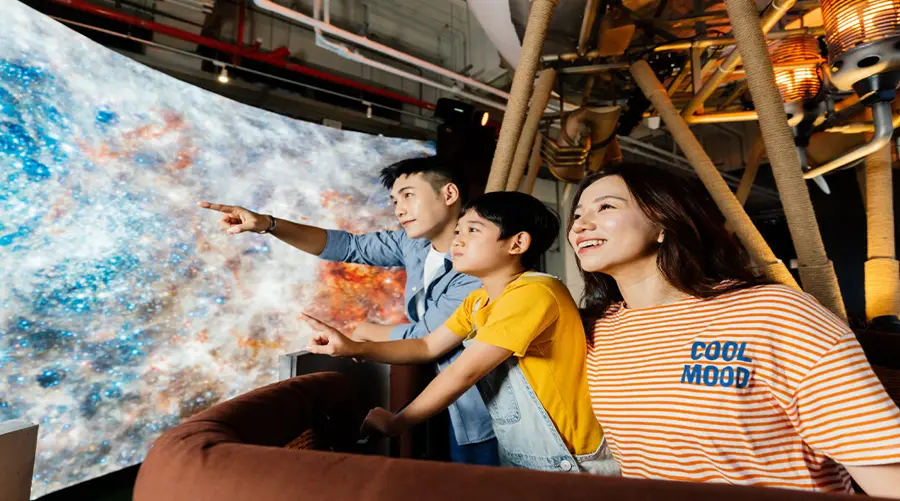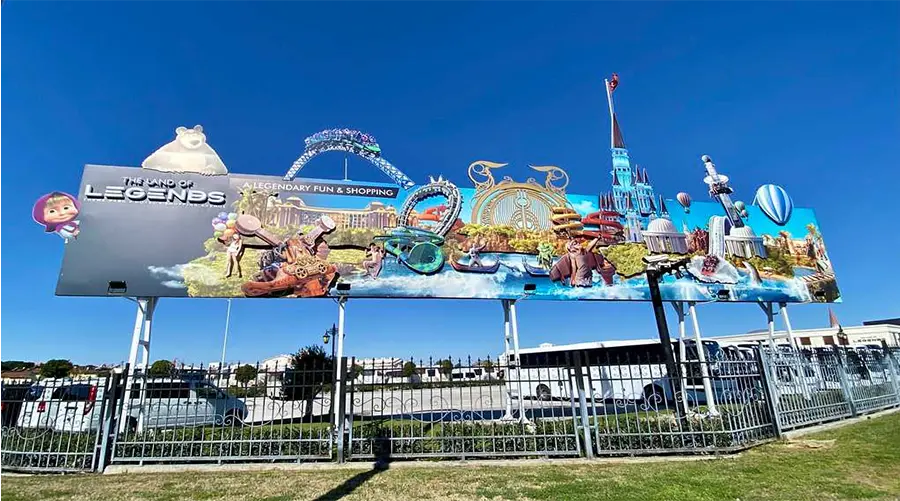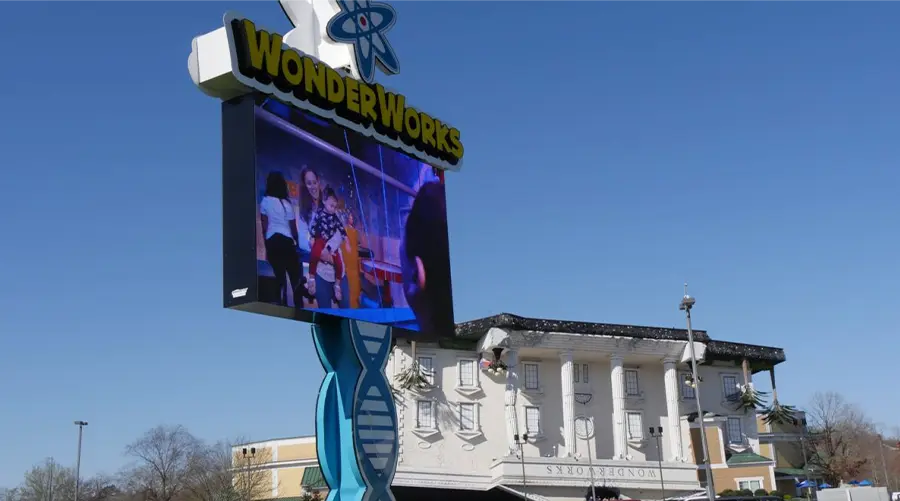Modern theme parks rely on amusement park LED displays to create immersive, interactive, and sustainable environments. From dynamic queue entertainment to energy-efficient screens, LED technology is redefining how visitors engage with attractions. As the global theme park industry grows at a compound annual growth rate (CAGR) of 6.2% (Statista, 2024), the demand for advanced LED solutions has surged. This article explores the critical role of LED displays in modern parks, their technological advancements, real-world applications, and future trends.

Amusement park LED displays are no longer optional—they’re a necessity for modern parks. Here’s why:
High-Resolution Visuals: LED panels support 4K/UHD resolution, ensuring every detail of an attraction is visible, even from a distance. This is critical for entrance screens and showback displays.
Weather Resistance: Unlike traditional screens, LED displays are IP65-rated for outdoor use, making them ideal for harsh weather conditions (rain, sun, humidity).
Real-Time Content Updates: Parks can instantly update promotions, event schedules, or emergency messages without manual intervention.
Dynamic Queue Entertainment: LED screens transform waiting lines into interactive experiences. For example, Disney’s “MagicBand+” system uses LED kiosks to engage guests while they wait in line.
Cost Efficiency: While initial installation costs are higher, LED displays have a 10-15 year lifespan and require minimal maintenance, reducing long-term expenses.
According to a 2023 report by Grand View Research, the global LED display market is projected to reach $52.3 billion by 2030, driven by demand in the entertainment sector. Theme parks are leading this adoption due to their need for scalable, durable, and visually stunning solutions.
Recent innovations have made LED displays smarter, more flexible, and integrated with emerging technologies:
Modular Design: Panels can be curved, bent, or shaped to fit unique architectural needs. For example, Universal Studios’ “The Wizarding World of Harry Potter” uses modular LED panels to create a seamless Hogwarts-themed entrance.
High Brightness: Modern LED screens achieve up to 10,000 nits of brightness, ensuring visibility even in direct sunlight. This is essential for outdoor attractions like roller coasters and water parks.
Smart Diagnostics: Real-time monitoring of temperature, pixel health, and power consumption allows for predictive maintenance. Parks can avoid downtime by identifying issues before they become critical.
Interactive Capabilities: Touchscreen LED displays enable guests to book rides, check wait times, or interact with games. For instance, Legoland’s “Build-A-Robot” exhibit uses touchscreens to let children design their own robots.
5G Connectivity: 5G-enabled LED screens allow for ultra-low latency content streaming, enabling real-time updates for live events or sports broadcasts.
These advancements are not just about aesthetics—they directly impact guest satisfaction. A 2024 survey by Themed Entertainment Association (TEA) found that 78% of visitors consider high-quality visuals a key factor in their park experience.

Real-world examples demonstrate the transformative power of LED displays in theme parks:
A theme park in California replaced static signs with 15-meter curved LED walls at its main entrance. The screen now displays live social media feeds, event countdowns, and branded animations. This change increased guest engagement by 60% and reduced complaints about outdated signage.
Another example is an interactive LED floor screen in a water park’s splash zone. Footsteps trigger dynamic patterns and games, turning wait times into fun experiences for children and families. The park reported a 40% increase in repeat visits after implementing this feature.
A haunted house attraction in Florida used LED panels to simulate ghostly apparitions with motion-activated effects. Visitors could trigger lights and sounds by moving near specific panels, creating a personalized scare experience. This innovation boosted ticket sales by 25% during the Halloween season.
These case studies highlight how LED displays are not just tools for communication but integral to the storytelling and immersion of attractions.
Amusement park LED displays can be tailored to match specific attractions. For example:
Haunted House: LED panels simulate ghostly apparitions with motion-activated effects. Visitors can trigger lights and sounds by moving near specific panels.
Space-Themed Coaster: Holographic starfields on LED walls create a zero-gravity illusion as guests ride the coaster.
Historical Attractions: LED screens can project historical reenactments or AR overlays to educate guests about the era being depicted.
Customization extends beyond visuals. Parks can integrate LED displays with audio systems, scent machines, and haptic feedback to create multi-sensory experiences. For instance, Universal Studios’ “Jurassic World VelociCoaster” uses LED screens synchronized with rumbling seats and wind effects to simulate a dinosaur chase.

As the world shifts toward eco-friendly practices, LED displays are playing a role in reducing the environmental impact of theme parks:
Energy Efficiency: LED screens consume up to 50% less power than traditional displays. Parks can further reduce energy use by integrating smart sensors that dim screens during off-peak hours.
Recyclable Materials: Many manufacturers now use recyclable aluminum frames and non-toxic phosphor coatings, making end-of-life disposal safer for the environment.
Solar Integration: Some parks use solar-powered LED systems to achieve carbon neutrality. For example, Walt Disney World’s Epcot has solar-powered LED lighting in its World Showcase pavilions.
According to the International Energy Agency (IEA), the adoption of energy-efficient LED technology could reduce global electricity consumption for lighting by 40% by 2030. For theme parks, this means significant cost savings and a smaller carbon footprint.
The next decade will see even more groundbreaking innovations in LED displays for theme parks:
AR Overlays: Combining physical rides with digital elements via LED screens. For example, guests might wear AR glasses to see virtual dragons flying around a roller coaster.
AI-Driven Content: Personalized messages based on guest data (e.g., birthdays, ride preferences). AI can also optimize screen content in real-time based on crowd density or weather conditions.
IoT Integration: Real-time analytics for optimizing energy usage and maintenance. Parks can monitor screen performance and adjust settings remotely via IoT platforms.
Mini-LED and Micro-LED: These next-gen technologies offer higher contrast ratios, deeper blacks, and thinner form factors. They will enable even more immersive experiences, such as transparent LED displays for windowless attractions.

By 2030, the global LED display market is expected to reach $52.3 billion (Grand View Research), with theme parks accounting for 25% of the growth. Early adopters of these technologies will gain a competitive edge in attracting tech-savvy visitors.
Amusement park LED displays are no longer optional—they’re essential for creating unforgettable experiences. By leveraging cutting-edge technology, parks can boost visitor satisfaction, reduce operational costs, and stay ahead of the competition. Whether it’s through interactive floor screens, weather-resistant entrance displays, or AI-driven content, LED technology is reshaping the future of theme parks.
Ready to upgrade your park? Contact us for tailored LED display solutions! Our team of experts will help you design, install, and maintain a system that aligns with your brand vision and operational goals.
Hot Recommendations
Hot Products
Get a Free Quote Instantly!
Talk to Our Sales Team Now.
If you are interested in our products, please contact us promptly
Reach out to our sales team to explore customized solutions that perfectly meet your business needs and address any questions you may have.
Email Address:info@reissopto.comFactory Address:Building 6, Huike Flat Panel Display Industrial Park, No. 1, Gongye 2nd Road, Shiyan Shilong Community, Bao'an District, Shenzhen city , China
whatsapp:+8615217757270